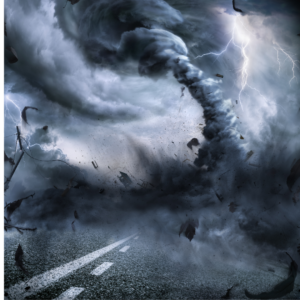Jacob’s Chanukah – First Steps On His Journey
 Monasticism tells us something important about the structure of our humanity. Almost every single one of the major world traditions has developed some form of cenobitic life. Just as some people – at all times and in all cultures – have felt impelled to become dancers, poets, or musicians, others are irresistibly drawn to a life of silence and prayer. They have an unusual talent, by no means granted to all the faithful, for meditation, and they will never be satisfied unless they are able to develop and practice it assiduously.
Monasticism tells us something important about the structure of our humanity. Almost every single one of the major world traditions has developed some form of cenobitic life. Just as some people – at all times and in all cultures – have felt impelled to become dancers, poets, or musicians, others are irresistibly drawn to a life of silence and prayer. They have an unusual talent, by no means granted to all the faithful, for meditation, and they will never be satisfied unless they are able to develop and practice it assiduously.
The monastic life demands a kind of death the death of the ego that we feed so voraciously in secular life. (Karen Armstrong, Introduction to ‘A Time To Keep Silence” by Patrick Leigh Fermor).
Although I hate tangents, I offer a:
TANGENT: A Chanukah Adventure
I gained more from, and better enjoyed Karen Armstrong’s introduction than Patrick Fermor’s book.
It’s not a rare experience. I recently reread Wallace Thurman’s hauntingly dark “The Blacker the Berry.” This edition had an introduction by Shirlee Taylor Haizlip, author of, “The Sweeter the Juice.” I was so moved by her introduction that I had to put the book down for a few hours to fully digest the power of Mrs. Haizlip’s message.
In both cases, I had long ago read and loved the book being introduced, just as a rereading of my deeply loved “Riders In The Chariot,” by Patrick White, was transformed by David Malouf’s profound introduction.
I love the story of Jacob, at his mother’s urging, stealing the blessings intended for his older brother Esau. I’ve studied the tale with students for more than forty years. But this year, I find myself savoring the introduction:
“Isaac was forty years old when he took to wife Rebekah, daughter of Bethuel the Aramean of Paddan-aram, sister of Laban the Aramean.
Isaac pleaded with the LORD on behalf of his wife, because she was barren; and the LORD responded to his plea, and his wife Rebekah conceived.
But the children struggled in her womb, and she said, “If so, why do I exist?” She went to inquire of the LORD, and the LORD answered her, “Two nations are in your womb, Two separate peoples shall issue from your body; One people shall be mightier than the other, And the older shall serve the younger.”
When her time to give birth was at hand, there were twins in her womb.
The first one emerged red, like a hairy mantle all over; so they named him Esau.
Then his brother emerged, holding on to the heel of Esau; so they named him Jacob.
Isaac was sixty years old when they were born.
When the boys grew up, Esau became a skillful hunter, a man of the outdoors; but Jacob was a mild man who stayed in camp.
Isaac favored Esau because he had a taste for game; but Rebekah favored Jacob (Genesis 25:20-28 – sefaria.org).”
I don’t mean to say that anything in the Torah is simply an introduction to that which follows. However it is here where we are introduced to the fascinating dynamics of multiple generations of multiple families of multiple value systems with multiple relationship (Toledot) issues.
In fact, we can study the entire portion as an introduction to those that follow. That first step, that first introduction or, even, induction into the story is also known in Hebrew as, Chinuch, otherwise known as education or consecration; the very essence of Chanukah, when they rededicated the Temple – also knowns as Jacob’s Tent – in Jerusalem.
- Is Chanukah intended to be our Chinuch – Dedication of the Year?
- Is the Mitzvah of lighting the Menorah designed as the Chinuch – rededication of our homes? Certainly a thought worth considering after so many months of renegotiating our relationship with our homes during quarantine.
- Is the Chanukah Hallel an act of Chinuch of the day?
- Is the Chanukah Hallel the type of Hallel that celebrates a miracle or a Hallel that marks stepping into a new stage (Chinuch)?
End of Tangent…
But hopefully not of our Chanukah Adventure
Was Young Jacob (considering becoming) a Monk?
“Monasticism tells us something important about the structure of our humanity. Almost every single one of the major world traditions has developed some form of cenobitic life. Just as some people – at all times and in all cultures – have felt impelled to become dancers, poets, or musicians, others are irresistibly drawn to a life of silence and prayer.
“They have an unusual talent, by no means granted to all the faithful, for meditation, and they will never be satisfied unless they are able to develop and practice it assiduously.
“The monastic life demands a kind of death the death of the ego that we feed so voraciously in secular life. (Karen Armstrong, Introduction to ‘A Time To Keep Silence’ by Patrick Leigh Fermor).”
“…but Jacob was a mild man who stayed in camp.”
If Jacob Was a Monk, Was He Escaping?
“At St. Wandrille I was inhabiting at last a tower of solid ivory, and I, not the monks, was the escapist (Patrick Fermor).”
Rav Hutner zt”l wondered why we light the Chanukah Menorah as daylight is fading and the night has yet to begin; would it not be more logical to light at night when the candles would be more noticeable?
Rav Hutner explains that the challenge we had to overcome in the Chanukah story was not one of black and white, with clear distinctions between good and evil. It was a challenge of grays, when we couldn’t discern between good and evil. We light the candles when the sky is gray to remind us of the essence of the battle.
Jacob had to master his own internal light before he could leave the safety of the Tents of Jacob and engage the Esaus and Labans of the world who so assiduously work to confuse day and night.



